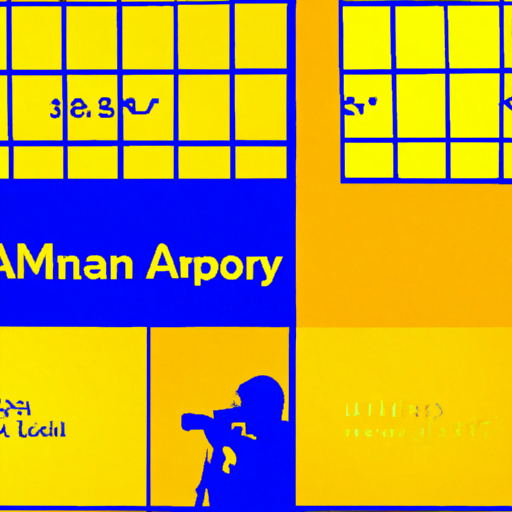
-
Table of Contents
Abram Games: The Master of Graphic Design

Abram Games was a renowned British graphic designer who left an indelible mark on the field of design. With his innovative approach, distinctive style, and commitment to social causes, Games became one of the most influential designers of the 20th century. This article explores the life, work, and lasting impact of Abram Games, shedding light on his contributions to graphic design and his role in shaping the industry.
Early Life and Education
Abram Games was born on July 29, 1914, in Whitechapel, London. Growing up in a working-class Jewish family, he developed an early interest in art and design. Despite facing financial constraints, Games pursued his passion and enrolled at Saint Martin’s School of Art in 1930. It was here that he honed his skills and discovered his love for graphic design.
During his time at Saint Martin’s, Games was greatly influenced by the teachings of Paul Nash, a prominent British surrealist painter. Nash’s emphasis on the power of visual communication and the importance of conveying a message through design resonated deeply with Games, shaping his artistic philosophy.
The Rise of a Design Icon
After completing his studies, Games embarked on his professional journey as a freelance designer. His breakthrough came in 1936 when he won a poster competition organized by the London Transport Board. The winning design, titled “Your Talk May Kill Your Comrades,” showcased Games’ ability to combine powerful imagery with concise messaging.
Games’ success in the competition catapulted him into the limelight, and he soon began receiving commissions from various clients, including government agencies, corporations, and cultural institutions. His designs were characterized by their simplicity, boldness, and ability to convey complex ideas with clarity.
Designing for the War Effort
During World War II, Games was appointed as an official war poster artist. His role was to create propaganda posters that would inspire and motivate the British public. Games’ designs during this period were instrumental in boosting morale and encouraging support for the war effort.
One of his most iconic war posters, “Join the ATS,” featured a striking image of a woman in the Auxiliary Territorial Service uniform, accompanied by the slogan “Be a woman in uniform.” The poster aimed to challenge traditional gender roles and encourage women to contribute to the war effort by joining the military.
Games’ ability to distill complex messages into visually impactful designs made him an invaluable asset during the war. His posters were displayed across the country, effectively communicating important information and rallying public support.
Design Principles and Innovations
Abram Games’ design philosophy was rooted in simplicity, clarity, and functionality. He believed that design should serve a purpose and communicate a message effectively. Games once famously said, “Maximum meaning, minimum means.”
One of Games’ notable innovations was the use of photography in his designs. At a time when illustration was the dominant medium in graphic design, Games embraced photography as a powerful tool for visual communication. He skillfully incorporated photographs into his designs, creating a seamless blend of imagery and typography.
Games also pioneered the use of symbols and pictograms in his work. He understood the universal language of symbols and their ability to transcend cultural and linguistic barriers. By incorporating symbols into his designs, Games ensured that his messages could be understood by a wide audience.
Case Study: The Festival of Britain
A prime example of Games’ design principles in action is his work for the Festival of Britain in 1951. The festival aimed to showcase British arts, science, and industry, and Games was tasked with creating a visual identity that would capture the spirit of the event.
Games’ design for the festival featured a bold, abstract symbol known as the “Festival Star.” The star symbolized the coming together of different disciplines and represented the festival’s theme of progress and innovation. The symbol was used across various promotional materials, including posters, brochures, and signage, creating a cohesive visual identity for the event.
The Festival of Britain design remains a testament to Games’ ability to create visually striking and conceptually meaningful designs. His work for the festival not only captured the essence of the event but also set a new standard for graphic design in the post-war era.
Legacy and Lasting Impact
Abram Games’ contributions to graphic design continue to resonate to this day. His innovative approach, commitment to social causes, and emphasis on clear communication have left an indelible mark on the industry.
Games’ influence can be seen in the work of contemporary designers who strive to create designs that are both visually appealing and conceptually meaningful. His use of symbols, photography, and concise messaging has become a staple in modern graphic design.
Furthermore, Games’ dedication to social causes serves as an inspiration for designers who aim to use their skills for the betterment of society. His war posters and designs promoting public health and safety demonstrate the power of design in influencing behavior and shaping public opinion.
Key Takeaways
- Abram Games was a British graphic designer known for his innovative approach, distinctive style, and commitment to social causes.
- His designs were characterized by simplicity, boldness, and the ability to convey complex ideas with clarity.
- Games’ use of photography, symbols, and concise messaging set him apart from his contemporaries.
- His work for the Festival of Britain and his war posters are prime examples of his design principles in action.
- Abram Games’ legacy can be seen in the work of contemporary designers and his influence on the field of graphic design.
In conclusion, Abram Games was a true master of graphic design. His innovative approach, distinctive style, and commitment to social causes have solidified his place as one of the most influential designers of the 20th century. Games’ designs continue to inspire and captivate, reminding us of the power of visual communication and the importance of conveying a message with clarity and purpose.
